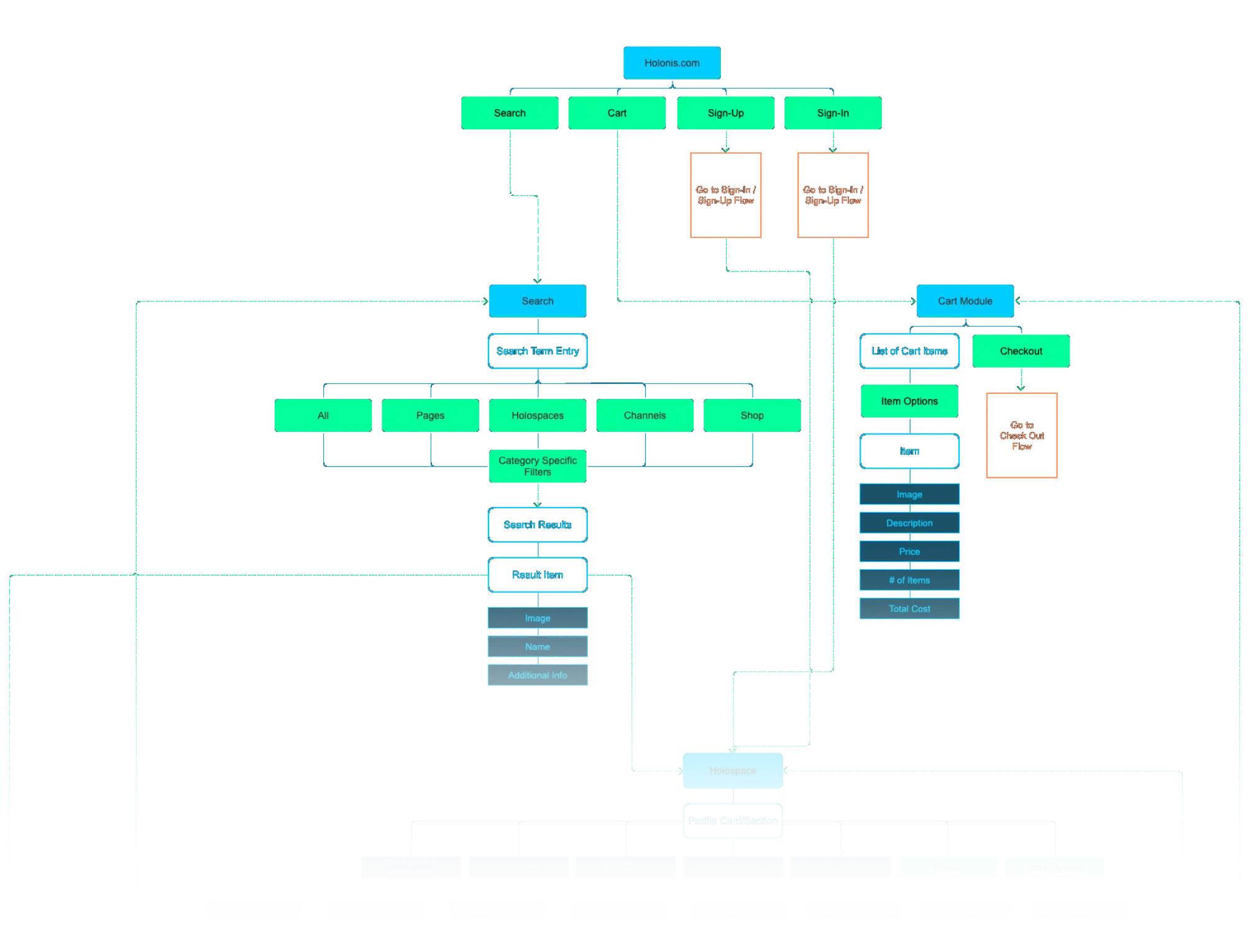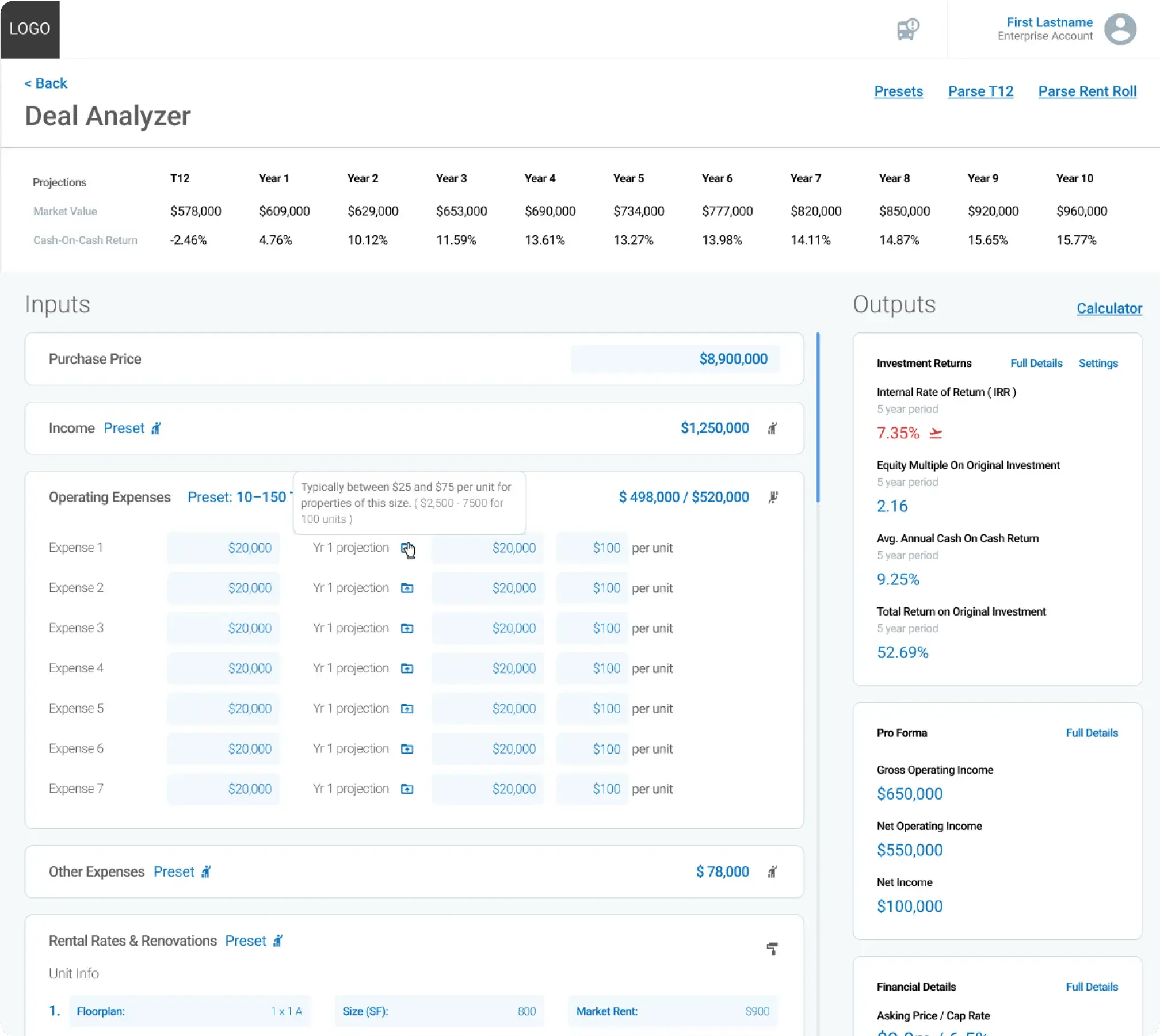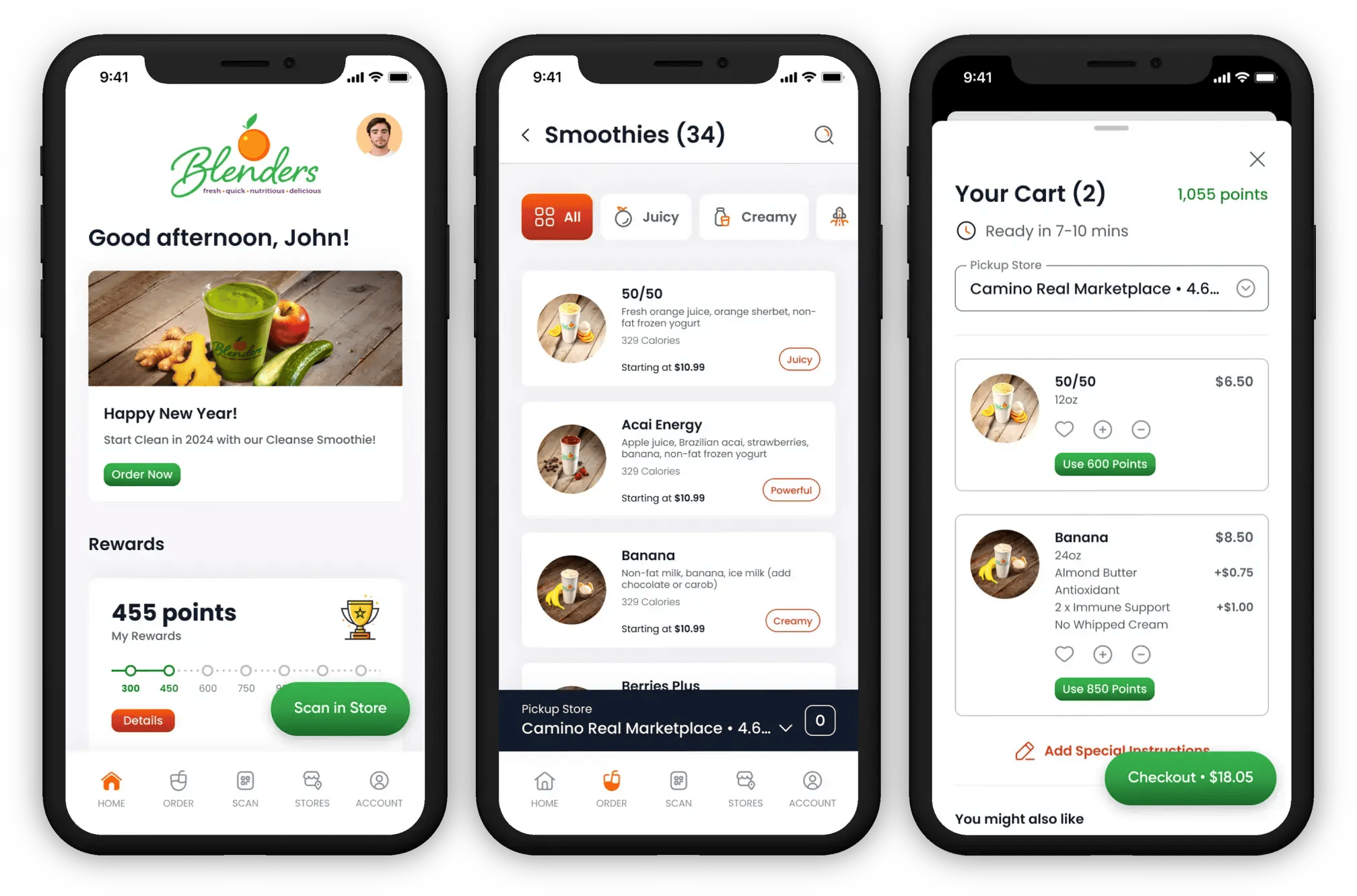Hybrid Agile Development Process
Hybrid Agile Project Approach
Seamgen employs a Hybrid Waterfall and Agile methodology for all projects. This planning focused approach blends Project Discovery, an iterative Design & Architecture process, and comprehensive documentation. Throughout our Hybrid Agile approach, we utilize a Kanban method to manage and iteratively optimize our workflow. These elements feed into a traditional Agile Scrum Development Process, culminating in a rigorous Final UAT & Deployment phase.
The Magic Triangle
There are three core aspects to consider when scoping a project: Features, Time, and Cost. The ‘Magic Triangle’ demonstrates that you cannot expand one aspect of a project without affecting others. Time, cost, and features are not mutually exclusive. If you’re seeking to develop a robust application with many features you’ll need a larger timeline and budget and vice versa. Employing this methodology ensures you receive optimal and successful agile development services.
Benefits of hybrid Agile
Flexibility and Adaptability
Agile methodologies allow us to make modifications to the work items and workflow even after project initiation. This flexibility ensures that new changes or requirements can be seamlessly integrated, even late in the development process. Key advantages include:
Discovery and Understanding Your Business Needs
Your project is 97% more likely to succeed with clear and documented requirements. What sets our process apart is our commitment to understanding your overall business goals at the beginning of the process. We create solutions that not only meet immediate requirements while enhancing productivity and ROI in the long term. The most important work items are always prioritized and completed first.
Adaptability to Changing Requirements
Agile’s iterative nature enables adjustments in response to evolving requirements or feedback, ensuring the final product closely aligns with your business needs and enhances user satisfaction.
Improved Product Quality and Risk Management
Through continuous integration, testing, and frequent iterations, Agile methodologies significantly improve the quality of the final product. Early and regular testing helps identify and address issues promptly, reducing risks and avoiding late-stage surprises.


Phase 1
Discovery and Strategy
The first step of our proven process, starts with the overall Discovery & Strategy. During this phase, we collaborate with stakeholders on branding and long-term vision, coupled with user research to create a roadmap to deliver value and ROI to your business. This comprehensive discovery process provides a Big Picture project view while crafting a project plan that brings this vision to life.
Discovery & Strategy Milestones
The Discovery & Strategy includes the following milestones: a kickoff meeting, user research, strategy workshops, and the analyzing and interpretation of project related data. Each milestone has deliverables we are responsible for producing and clients have deliverables for which they are responsible for producing.
During our kickoff meeting, we will:
- Review the feature list and ensure consensus on a Minimum Viable Product (MVP) scope while keeping the long-term vision in mind.
- Discuss existing processes, desired features, and begin the gathering requirements.
- Initial Feature List
- Product Roadmap
- MVP Project Plan
- Provide Stakeholder Feedback
- Supply Other Requested Materials
Through competitive landscape research and user interviews, we will uncover detailed expectations and specific needs important to understanding the psychology of your users.
- Creative Brief
- Stakeholder Interview
- Design Thinking Workshop
- User Personas
- User Journeys
- Identify User Roles & Demographic Information
- Schedule Interviews
Through competitive landscape research and user interviews, we will uncover detailed expectations and specific needs important to understanding the psychology of your users.
- Integration Recommendations
- Feature Ideation
- Persona Refinement
- User Journey Refinement
- Provide Business Requirements
User Experience Discovery Artifacts
User Experience Discovery Artifacts are documentation and items produced during the Discovery & Strategy phase to support later phases of our process, often used internally by the members of the project team.
User personas are fictional characters representing different user types. They help the team understand user needs, behaviors, and goals, guiding design decisions to create user-centric products and experiences.

User Personas: We create user personas to better understand types of users interacting with projects we build. For projects with a large number of active user types, we generate quite a few user personas with a variety of differing demographics.
User journey maps visually depict the steps users take to achieve goals within a system. They reveal user pain points, highlight opportunities for improvement, and ensure user-centric design, fostering better user experiences.

User Journey Maps: We gather valuable information interviewing stakeholders and users. We use the data to produce user journey maps. Journey maps help determine gaps to fill improving the business plan and creating a best in class web apps.
Phase 2
Design & Architecture
Once the project plan is in place, we break down each feature in the roadmap and begin the Design & Architecture phase. Depending on the feature's size, we may conduct feature-level discovery to best understand the intersection of user needs and business requirements for each feature. We then create high-fidelity Wireframes and a Design System, culminating in pixel-perfect Design Comps.
The assets created, along with Acceptance Criteria, are bundled into User Stories to provide our development team with precise directions on implementing the designs. This optimizes development time and resources and minimizes waste, ultimately saving valuable time and budget.
Design & Architecture Milestones
The Design & Architecture phase includes the following milestones: User Experience Design, Technical Design, and Documentation. Each milestone has deliverables we are responsible for producing and deliverables for which you are responsible for producing.
We collaborate closely with your product owners to wireframe the optimal user experience. Once the wireframes are approved, we transform the wireframes into pixel-perfect visual designs. During this process, we create a comprehensive Design System to be used for future development.
- Information Architecture
- User Flow Diagrams
- Wireframes
- Visual Design
- Design System
- Provide Product Owner Input
- Sign Off on Designs
We work with your team to identify opportunities for automating processes using cloud-based technologies. We architect a multi-tenant .NetCore-based system on Microsoft Azure and create a DevOps pipeline to streamline development and deployment.
- Architecture Diagram
- DevOps Pipeline
- Integration Plan
- Provide IT Input
- Supply Other Requested Materials
Based on approved designs, we create User Stories containing Acceptance Criteria and technical requirements. Once these are approved by your team, we establish a traditional product backlog and prioritize the work based on your feedback.
- User Stories
- Acceptance Criteria
- Technical Requirements
- Provide Input n Acceptance Criteria
- Final Sign-Off of Work
Design Artifacts
Design Artifacts are documentation and items produced during the Design & Architecture phase to support later phases of our process and are often used internally by the members of the project team.
During the discovery and initial design phases, we create detailed and comprehensive information architecture diagrams. These diagrams lay out the overall structure of the software, allowing us to plan seamless user experiences.

Site Maps: A site map serves as an essential component of the information architecture deliverables providing a visual representation of the hierarchical structure of a website or application. This enables a better understanding of the project for everyone involved.
Once the information architecture is planned, we create low to mid-fidelity wireframes to start crafting the basic look and feel of the app. Our focus at this stage is on usability, ensuring that all required functionality is covered on each page.

Wireframes: Wireframes are a critical UI/UX deliverable providing a skeletal representation of website pages or application layouts and depict the arrangement of various elements and their interactions within the UI.
After developing, discussing, and approving a comprehensive set of wireframes, we will convert them into high-fidelity wireframes and clickable prototypes. These modern designs are carefully crafted for ease of use and to resonate perfectly with the target audience.

Visual Designs: We create Visual Designs for every product design engagement. This allows the developers to produce a functional product that meets today's demand for great design.
Architecture Artifacts
Architecture Artifacts are documentation and items produced during the Design & Architecture phase to support the build out of your system environment. During this phase, our senior system architects thoroughly research and document technical requirements. Upon approval of these requirements, we architect scalable solution tailored to your needs, whether cloud-based or on-premise.
As we research and document the technical requirements, we create an architecture diagram. This visual representation outlines the structure of the software system, detailing components, their relationships, and interactions. It serves as a blueprint for the system's design and implementation, and guides the development team in building a robust and cohesive system.
During the architecture phase, we develop a DevSecOps framework. This comprehensive framework combines development, security, and operations best practices, ensuring security measures are integrated and automated throughout the entire development lifecycle. From design to deployment, this framework helps maintain a secure and efficient workflow, aligning with the overall system architecture.
To keep your system up-to-date and efficient, we create a modernization and resource efficiency plan. This strategic document outlines methods to update and optimize existing systems. It focuses on improving performance, scalability, and resource utilization, ensuring the software infrastructure remains modern, efficient, and capable of meeting future demands.
As part of the architecture artifacts, we also produce detailed API documentation. This documentation describes the application programming interfaces (APIs), providing developers with essential information to understand, use, and integrate the APIs. The documentation includes details on endpoints, request and response formats, and authentication methods, facilitating seamless integration and development.
Systems Designed for Your Environment
Understanding your team and system environment helps us design system solutions that integrate seamlessly into your infrastructure and are supported by your existing staff. Our designs take into consideration all of the following system elements:
- Information Architecture
- User Flow Diagrams
- Wireframes
- Visual Design
- Design System
- Provide Product Owner Input
- Sign Off on Designs
- Initial Feature List
- Product Roadmap
- MVP Project Plan
- Provide Stakeholder Feedback
- Supply Other Requested Materials
Phase 3
Agile Development
In the Agile Development phase, we operate on a two-week sprint cadence. During each sprint, we utilize design artifacts and deliverables (annotated wireframes, final visual design mockups, and acceptance criteria) to prioritize work items (user stories), develop the necessary code to bring the designs to life, perform quality assurance testing, and finally, provide a demo of the completed work.
This process repeats until we are ready to publish the application live. At that point, we will work with your IT team to create all necessary DevSecOps to ensure the production environment is fully automated.
Agile Development sprints include the following phases of each development cycle: Sprint Planning, User Story Grooming, Scrums, Code Reviews, Quality Assurance Testing, and End of Sprint Demos.
We work closely with you to prioritize the backlog of user stories, ensuring the core features of the application are the primary focus.
Each sprint iteration begins with a grooming session where stories are analyzed, refined, and divided into tasks.
Daily standup meetings are held with the team, project management, and client stakeholders to discuss progress, current tasks, and blockers. This maintains constant communication throughout each sprint.
As developers complete tasks and issue pull requests, a technical lead reviews the code for accuracy and adherence to guidelines. Approved pull requests are merged into the product codebase.
Testing is a shared responsibility between Quality Assurance (QA analysts and developers. Developers implement unit and integration tests, while QA validates the implementation against defined functionality. Manual testing across supported clients and devices is conducted, with regression testing performed as needed.
At the end of each sprint, the development team demonstrates the completed functionality which has been approved by QA, to the client and project team.
Development Artifacts
Development Artifacts are documentation and items produced during the Agile Development phase to support later phases of our process and are often used internally by the members of the project team.
Weekly progress reports include:
- Burn Down Charts
- Sprint Progress
- Detailed report on time and efforts, issues, and overall progress
All developed and created resources are owned by you, including custom source code, CI/CD scripts, and detailed architecture diagrams for Development, QA, Staging, and Production environments.
At the end of every sprint, we back up our work effort and perform a demo of your application. This demonstrates progress and allows for feedback to be incorporated into future sprints.
Phase 4
Final UAT & Deployment
In the final phase, Final UAT & Deployment, we perform comprehensive user acceptance testing (UAT) to validate the application meets all specified requirements and functions as expected in real-world scenarios. Our QA team conducts rigorous testing to identify and resolve any remaining issues. Once UAT is complete and any necessary adjustments are made, we move forward with the deployment. We work closely with your IT team to execute a smooth and seamless launch, ensuring that all systems are go and your application is ready for use. Post-deployment, we provide monitoring and support to promptly address any potential issues, ensuring a successful rollout and optimal performance.
Once the application functionality is complete, our QA team performs a complete regression test of all features and acceptance criteria. The application may be made available to a select group of users for user acceptance testing (UAT).
During UAT, our QA team conducts load testing to measure Quality of Service (QoS) metrics based on the expected user-base and behaviors. A load testing report is generated based on the collected statistics.
During UAT, we work with you to triage and prioritize reported bugs. Our development team addresses high-priority issues and ensures that the application meets the established QoS metrics.
Our team configures application monitoring to alert administrators of potential operational issues early, aiming to eliminate system downtime. This includes monitoring failed integrations, user-experienced errors, and degraded user experience.
When the application is ready for release, our development team executes a planned deployment. The deployment plan, shared in advance, includes cut-over procedures and migration activities. Post-deployment, our QA team verifies the proper functioning of the system.
Phase 5
Rinse and Repeat
If a project is ongoing and requires additional versions or features, we seamlessly transition back to Strategy/Discovery to start the process anew. This iterative approach allows us to continuously refine and enhance the application, ensuring it evolves to meet changing needs and incorporates feedback from users and stakeholders. By revisiting the strategy and discovery phase, we can effectively plan and execute subsequent development cycles, maintaining a high standard of quality and alignment with your business objectives.
Do you need a custom software development partner?
Let’s discuss your modernization strategy and digital application goals.
Custom Computer
Programming Services
Software
Publishers
Computer System
Design Services
Computer Facilities
Management Services
Other computer
related services






